Explore the profound connections between the Eucharist and Jewish traditions. This guide delves into the historical and theological significance of the Last Supper, revealing how Jesus fulfilled messianic expectations through the Passover Seder and transformed Jewish rituals into the Christian sacrament.
The Eucharist, a central sacrament in Christianity, finds its roots deeply intertwined with Jewish traditions and scripture. This study guide explores how Jesus’ actions during the Last Supper were not isolated events but were firmly grounded in Jewish practices and messianic expectations. By examining the historical and theological context, we uncover how the Eucharist reflects a fulfillment of Old Testament promises and rituals.
Brant Pitre’s work highlights the importance of viewing the Eucharist through the lens of 1st-century Judaism. The Last Supper, as a Passover Seder, was not just a meal but a symbolic act loaded with meaning. Jesus’ words, “This is my body” and “This is my blood,” resonate deeply when understood against the backdrop of Jewish scripture and tradition.
This introduction sets the stage for understanding the Eucharist as more than a Christian ritual—it is a continuation of God’s covenant with His people, bridging the Old and New Testaments. By exploring these Jewish roots, we gain a richer appreciation of the Eucharist’s significance in Christian faith and practice.
- The Eucharist is deeply connected to Jewish traditions and scripture.
- Understanding the Jewish context enriches the meaning of the Last Supper.
- The Eucharist fulfill Old Testament promises and rituals.
This study guide invites you to journey through the biblical and historical connections, revealing the profound unity between Judaism and Christianity in the celebration of the Eucharist.
The Historical Context of the Last Supper

The Last Supper, a pivotal event in Christian theology, occurred within the rich tapestry of 1st-century Jewish culture and tradition. Jesus and his disciples gathered in Jerusalem to celebrate the Passover, a sacred Jewish holiday commemorating the Exodus from Egypt. This historical context is crucial for understanding the deeper meaning of the Last Supper.
Passover, or Pesach, was a time of profound religious significance, rooted in the Jewish people’s liberation from slavery. The Seder meal, with its symbolic elements like unleavened bread (matzah) and the cup of redemption, held deep theological meaning. Jesus, as a devout Jew, participated in this tradition but infused it with new significance.
By breaking bread and sharing the cup, Jesus reinterpreted these symbols in light of His mission. His words, “This is my body” and “This is my blood,” pointed to His upcoming sacrifice, fulfilling the Jewish expectation of a Messiah who would bring redemption. The Last Supper thus became a bridge between Jewish tradition and the dawn of Christianity.
- The Last Supper took place during the Jewish Passover celebration.
- Passover symbolized liberation and redemption in Jewish history.
- Jesus reinterpreted Passover symbols to foretell His sacrifice.
Understanding this historical context reveals how Jesus’ actions were deeply rooted in Jewish tradition while ushering in a new covenant for all humanity.
Jewish Traditions and the Passover Seder
The Passover Seder is a cornerstone of Jewish tradition, commemorating the Israelites’ liberation from Egyptian slavery. Central to the Seder is the recitation of the Haggadah, which recounts the Exodus story, and the consumption of symbolic foods such as matzah (unleavened bread), maror (bitter herbs), and charoset.
The Seder meal is structured around four cups of wine, each representing a different aspect of redemption. The breaking of the matzah, known as the “afikoman,” symbolizes the haste of the Israelites’ departure from Egypt. These rituals are deeply rooted in Jewish scripture and tradition, providing a rich theological framework for understanding the Last Supper.
In the context of the Eucharist, the Passover Seder’s emphasis on redemption and covenant renewal takes on new meaning. The matzah, symbolizing both affliction and liberation, foreshadows Christ’s body offered for the salvation of humanity. Similarly, the cup of redemption prefigures the blood of the covenant, a theme central to the Eucharist.
- The Passover Seder commemorates the Exodus from Egypt.
- Symbolic foods like matzah and maror represent key aspects of the Exodus story.
- The four cups of wine signify stages of redemption.
These Jewish traditions provide the historical and theological backdrop for understanding the Last Supper and its transformation into the Eucharist;
The Significance of the Last Supper in Jewish History
The Last Supper holds profound significance in Jewish history, as it was deeply rooted in the traditions of the Passover Seder. Jesus and his disciples observed this meal to commemorate the Exodus from Egypt, a central event in Jewish identity. The Passover Seder symbolizes liberation and covenant renewal, themes that Jesus infused with new meaning during the Last Supper.
In the Jewish context, the Passover Seder is a celebration of God’s deliverance and faithfulness. By initiating the Last Supper within this framework, Jesus connected his mission to Israel’s history, fulfilling messianic expectations. The meal became a symbol of unity and renewal for his followers, bridging the gap between Jewish tradition and the emerging Christian community.
- The Last Supper was a Passover Seder, linking it to Jewish liberation history.
- Jesus reinterpreted the Seder to emphasize communal unity and spiritual renewal.
- The meal marked a turning point, blending Jewish tradition with Christian revelation.
Thus, the Last Supper is a pivotal event in Jewish history, reflecting both continuity with Jewish heritage and the dawn of a new covenant.
Jesus’ Fulfillment of Jewish Messianic Expectations
Jewish messianic expectations were deeply rooted in the hope of a deliverer who would restore Israel and fulfill God’s promises. Jesus, through his actions and teachings, revealed himself as the long-awaited Messiah, embodying the prophetic expectations of a king, priest, and shepherd. The Last Supper, as a pivotal moment, showcased Jesus’ fulfillment of these expectations in a way that resonated deeply with Jewish tradition.

The Messiah was anticipated to be a descendant of King David, establishing a reign of righteousness. Jesus, by instituting the Eucharist, symbolized the inauguration of a new covenant, mirroring the messianic banquet described in Jewish prophecy. His words, “This cup is the new covenant in my blood,” aligned with the expectation of a Messiah who would bring redemption and unity to God’s people.
- Jewish tradition awaited a Messiah who would restore Israel and fulfill divine promises.
- Jesus embodied the roles of king, priest, and shepherd, central to messianic prophecy.
- The Eucharist symbolized the messianic banquet, inaugurating a new covenant.
By fulfilling these expectations, Jesus redefined the messianic hope, offering a universal salvation that transcended traditional Jewish boundaries while remaining deeply rooted in its spiritual heritage.
The Role of Bread and Wine in Jewish Rituals
Bread and wine hold a significant place in Jewish rituals, deeply rooted in biblical and cultural traditions. Bread, particularly unleavened bread, symbolizes humility, simplicity, and remembrance of the Exodus, where the Israelites left Egypt in haste. It is a staple in Jewish meals, often served with blessings to acknowledge God’s provision. Wine, on the other hand, is a symbol of joy, abundance, and covenant, often used in religious ceremonies to sanctify moments of worship and celebration.
In Jewish tradition, bread and wine are central to the Passover Seder, where unleavened bread (matzah) reminds the people of Israel’s redemption, and wine represents the blood of the covenant. Similarly, during the Shabbat meal, challah bread is blessed, and wine is used in the kiddush ceremony to welcome the Sabbath. These elements are not just symbolic but also serve as a means of connecting with God and commemorating His promises to Israel.
- Bread represents humility, simplicity, and remembrance of the Exodus.
- Wine symbolizes joy, abundance, and covenant in Jewish rituals.
- Bread and wine are central to the Passover Seder and Shabbat meals.
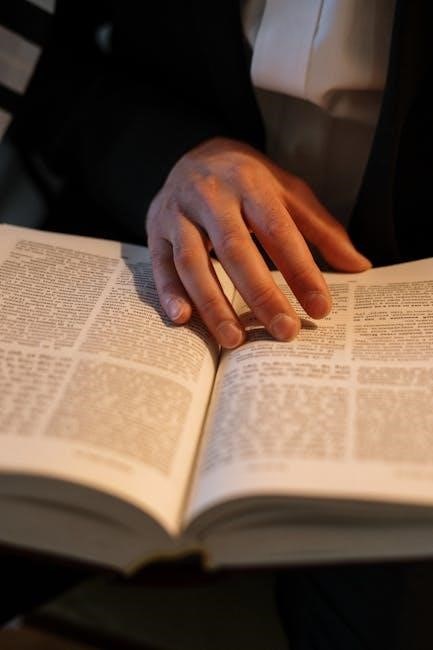
These traditions laid the groundwork for understanding the deeper spiritual significance of bread and wine in the context of the Eucharist.
The Institution of the Eucharist at the Last Supper
The institution of the Eucharist occurred during the Last Supper, a Passover meal Jesus shared with His disciples before His crucifixion. This moment marked a profound transformation of Jewish ritual into a new covenantal act. Jesus took bread, broke it, and said, “This is My body, which is given for you,” and He offered the cup of wine, declaring it to be “the new covenant in My blood.” These actions reinterpreted the Passover symbols, linking them to His upcoming sacrifice.
By instituting the Eucharist, Jesus fulfilled the Jewish expectation of a messianic banquet, where God would feast with His people. The bread and wine, central to the Passover Seder, now signified His body and blood, given for the redemption of humanity. This act established a sacred meal that would sustain believers spiritually and unite them in communion with Him and with one another.
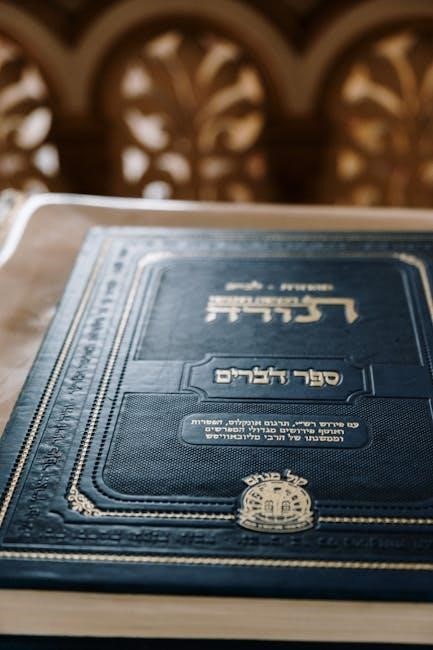
- Jesus transformed the Passover meal into a new covenantal act.
- Bread and wine symbolized His body and blood, given for humanity’s redemption.
- The Eucharist fulfilled the messianic expectation of a divine banquet.
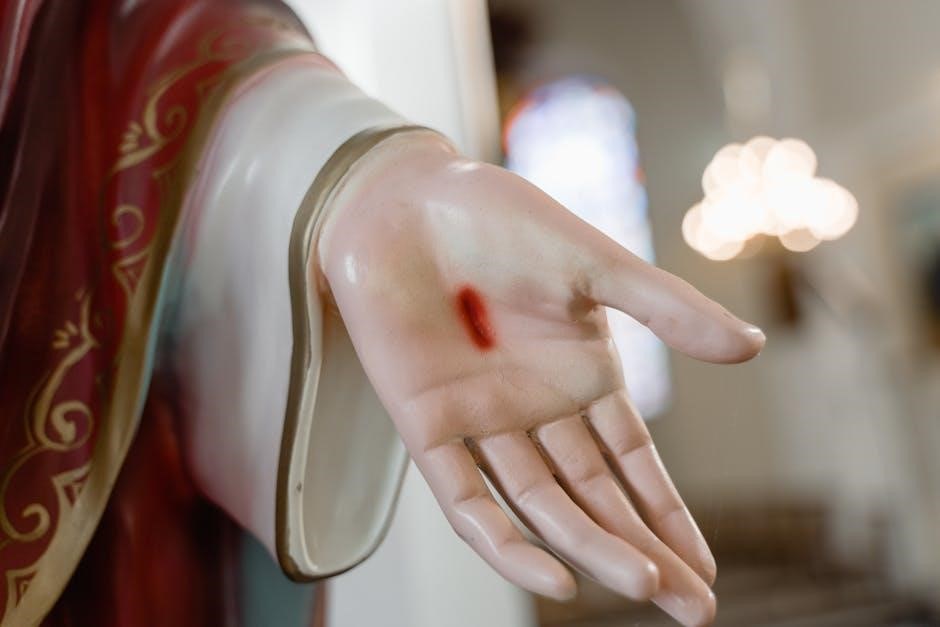
This sacred institution became the heart of Christian worship, commemorating Jesus’ sacrifice and deepening the spiritual bond between believers and their Savior.
Symbolism of the Bread and the Cup
The bread and the cup in the Eucharist hold profound symbolic meaning, deeply rooted in Jewish tradition and Scripture. The bread, which is unleavened in the Passover Seder, represents humility, simplicity, and the haste of the Israelites’ departure from Egypt. It also symbolizes the purity of Christ’s body, free from sin, and the unity of believers in sharing one loaf. The cup of wine, traditionally the fourth cup of the Passover, signifies redemption and the outpouring of God’s mercy. For Christians, it represents Jesus’ blood, shed for the forgiveness of sins.
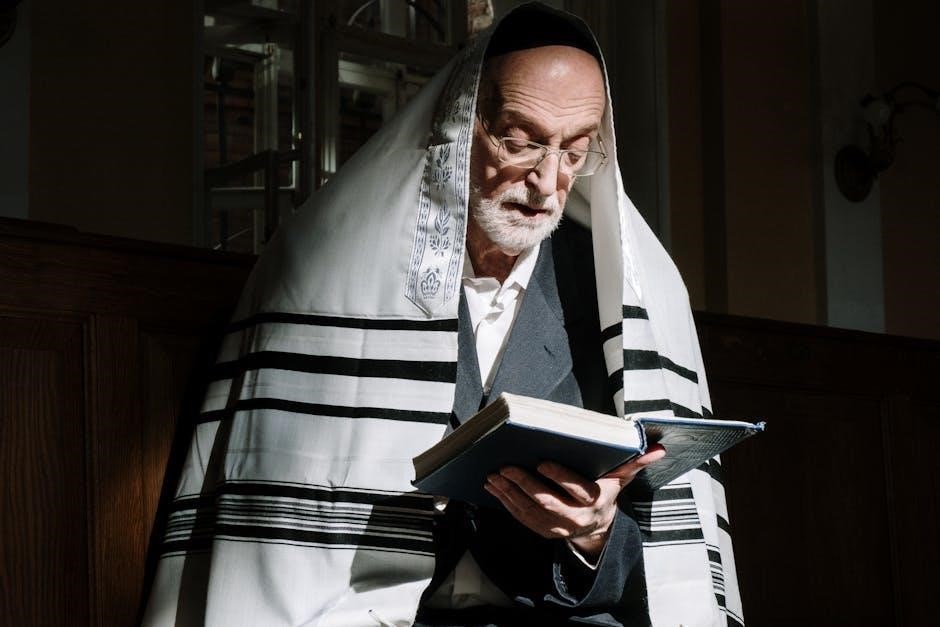
Together, the bread and the cup symbolize the covenant between God and humanity, sealed through Jesus’ sacrifice. They are not just symbols but are believed to convey spiritual grace, nourishing the soul and deepening communion with God. This sacred meal reflects the Jewish hope for messianic redemption, fulfilled in Christ.
- Bread: Symbolizes Christ’s body, purity, and unity among believers.
- Cup: Represents Jesus’ blood, redemption, and the new covenant.
This symbolism bridges Jewish tradition and Christian faith, emphasizing the Eucharist as a gift of divine love and salvation.
The Connection Between the Eucharist and the Exodus
The Eucharist deeply resonates with the Exodus narrative, a foundational event in Israel’s history. The Exodus symbolized liberation from slavery and the establishment of God’s covenant with His people. Similarly, the Eucharist represents spiritual liberation through Jesus’ sacrifice, freeing humanity from sin and establishing a new covenant.
In the Exodus, God provided manna in the wilderness to sustain His people, prefiguring the Eucharist as spiritual nourishment. Jesus, the “bread of life,” fulfills this symbolism, offering Himself as the true bread from heaven. The Exodus also emphasized the covenant meal, where God dwelled among His people, a theme mirrored in the Eucharist, where Christ becomes present among believers.
- The Exodus represents liberation from slavery, foreshadowing liberation from sin through the Eucharist.
- Manna in the wilderness symbolizes God’s provision, fulfilled in the Eucharist as spiritual sustenance.
- The covenant established at Sinai finds its fulfillment in the new covenant sealed by Jesus’ body and blood.
- The parting of the Red Sea as a “baptism” into freedom parallels baptism and the Eucharist as sacraments of spiritual rebirth.
The Eucharist thus bridges the Exodus and Christian faith, revealing Jesus as the ultimate source of liberation and divine life.
Jesus as the New Moses and the Eucharist as Spiritual Manna
Jewish tradition anticipated a “New Moses” who would lead God’s people to ultimate redemption. Jesus fulfilled this expectation, presenting Himself as the ultimate leader and lawgiver. Just as Moses provided manna in the wilderness to sustain the Israelites, Jesus offers Himself as the “bread of life,” fulfilling the symbolism of manna in a profound way.

The manna in Exodus was a miraculous gift, sustaining the Israelites physically during their journey. Similarly, the Eucharist is a spiritual manna, nourishing believers with the real presence of Christ. Jesus’ statement, “I am the bread of life” (John 6:35), directly connects His mission to the Exodus narrative, emphasizing that He is the true bread from heaven.
- Moses led the Israelites out of slavery; Jesus frees humanity from sin.
- Manna sustained life temporarily; the Eucharist offers eternal life.
- Both Moses and Jesus mediate God’s covenant with His people.
The Eucharist thus reveals Jesus as the New Moses, providing spiritual nourishment and fulfilling God’s promise of a covenant that endures forever. Through the Eucharist, Christians experience a deeper union with God, mirroring the intimate relationship God desired with His people in the Exodus. Jesus’ role as the New Moses and the Eucharist as spiritual manna underscore the continuity between Jewish tradition and Christian faith.
The Eucharist and the Sacrifice of the Passover Lamb
The Eucharist holds profound connections to the sacrifice of the Passover Lamb, a central symbol in Jewish tradition. The Passover Lamb was slain to spare the firstborn sons of Israel during the Exodus, its blood serving as a sign of redemption and protection. Similarly, Jesus is often referred to as the “Lamb of God,” symbolizing His sacrificial death for the redemption of humanity from sin.
In the Eucharist, Christians partake of the bread and wine, which represent Christ’s body and blood. This sacrament commemorates Jesus’ ultimate sacrifice, paralleling the Passover Lamb’s role in the Exodus narrative. The Last Supper, a Passover Seder, was the setting where Jesus instituted the Eucharist, further linking His sacrifice to the traditions of the Passover.
Just as the Passover Lamb was sacrificed to save the Israelites, Jesus’ sacrifice offers salvation to all people. The Eucharist serves as a remembrance of this sacrifice, uniting believers with Christ and His redemptive act. This connection underscores the deep theological ties between the Passover and the Eucharist, highlighting the continuity of God’s plan of salvation across both Jewish and Christian traditions.
The Transformation of Jewish Rituals into Christian Sacraments
The transformation of Jewish rituals into Christian sacraments is a profound aspect of the Eucharist’s origins. Jewish practices, such as the Passover Seder and the breaking of bread, laid the groundwork for the Christian sacrament of the Eucharist. Jesus, during the Last Supper, took these familiar rituals and imbued them with new spiritual significance, establishing them as central to Christian worship.
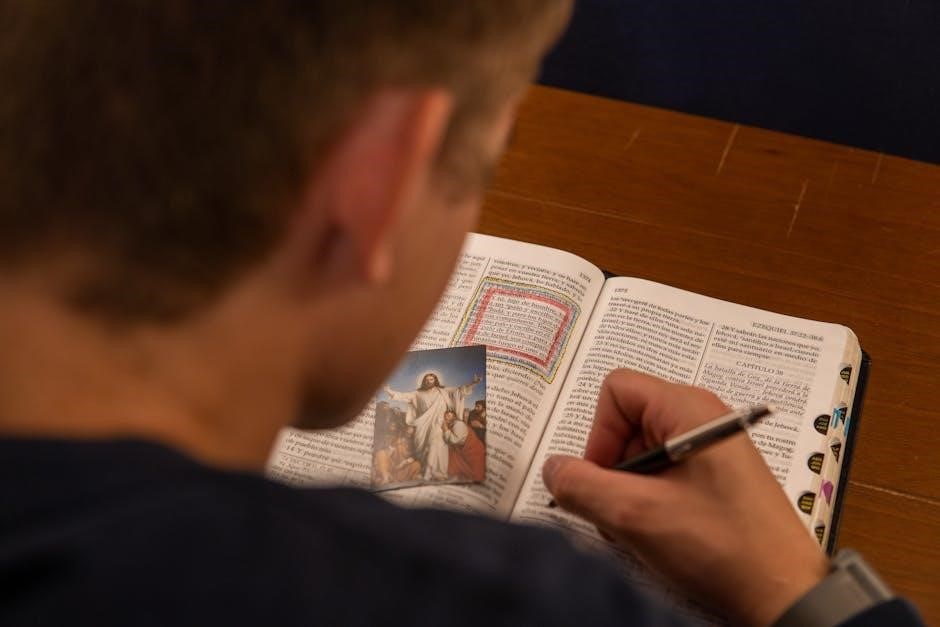
The early Church embraced these transformed rituals, integrating them into their liturgical life. For instance, the Jewish custom of reciting blessings over bread and wine evolved into the Christian practice of consecration during the Eucharistic rite. This transformation was not merely a continuation but a redefinition, reflecting the new covenant established through Christ.
This evolution underscores the continuity between the Old and New Testaments, demonstrating how Christian practices are deeply rooted in Jewish tradition. The Eucharist, as a sacrament, serves as a bridge, connecting the historical rituals of Judaism with the spiritual realities of Christianity. This transformation is vital for understanding the Eucharist’s role in Christian life and its enduring connection to Jewish heritage.
The Early Church’s Understanding of the Eucharist
The early Church viewed the Eucharist as a sacred continuation of the Last Supper, deeply rooted in Jesus’ command to “do this in remembrance of me.” They saw it as a source of spiritual unity, fostering a communal bond among believers. The Eucharist was central to their worship, often celebrated during the “Lord’s Supper” on Sundays, the day of Christ’s resurrection.
The early Church Fathers, such as Ignatius of Antioch and Justin Martyr, emphasized the Eucharist’s transformative power. They referred to it as “the medicine of immortality” and “the bread of heaven,” highlighting its role in sustaining believers spiritually. The Eucharist was also understood as a sacrifice of thanksgiving, linking it to Christ’s sacrificial death and resurrection.
This understanding shaped the early Church’s liturgical practices, blending Jewish traditions with Christian theology. The Eucharist became a focal point of their faith, reinforcing their identity as a community united in Christ. It was not just a ritual but a living encounter with the risen Lord, sustaining them in their spiritual journey and mission to spread the Gospel.
The Eucharist in the Context of Jewish Scripture and Tradition
The Eucharist is deeply rooted in Jewish scripture and tradition, drawing significance from key Old Testament themes and rituals. The Last Supper, during which Jesus instituted the Eucharist, was a Passover Seder meal, connecting it to Israel’s liberation from Egypt. This link emphasizes the Eucharist as a covenant meal, much like the Passover, commemorating God’s saving act.
In Jewish tradition, bread and wine were central to sacrificial offerings and communal meals, symbolizing thanksgiving and covenant renewal. The Eucharist mirrors this, with Jesus transforming these elements into His body and blood, signifying a new covenant. The Psalms and Prophets, such as Isaiah’s vision of the messianic banquet, foreshadowed this sacred meal.
The Eucharist also reflects the Exodus narrative, where manna sustained Israel in the wilderness. Jesus, as the “bread of life,” fulfills this tradition, offering Himself as spiritual manna for believers. Thus, the Eucharist becomes a living connection to Jewish scripture, embodying God’s enduring covenant with His people and the ultimate redemption through Jesus Christ.

The Theological Implications of the Eucharist for Christians
The Eucharist holds profound theological significance for Christians, serving as a sacrament that deepens their communion with Christ and His Church. It is a living encounter with the risen Lord, where believers participate in His sacrificial love and receive spiritual nourishment. The Eucharist embodies the forgiveness of sins, unity among believers, and the renewal of God’s covenant with humanity.
The mystery of the Eucharist reflects the heart of Christian theology: Christ’s self-giving love and the transformation of believers through grace. It is a sacrament of thanksgiving, memorial, and anticipation, linking the past redemption of the Cross to the future hope of eternal life. The Eucharist also fosters a sense of community, as Christians unite in sharing one bread and one cup, symbolizing their oneness in Christ.
For Christians, the Eucharist is not just a ritual but a divine encounter that transforms lives. It strengthens faith, sustains hope, and deepens love, enabling believers to live as disciples of Christ in the world. The Eucharist is a powerful reminder of God’s unwavering love and the ultimate promise of eternal communion with Him in heaven.
Practical Applications of the Eucharist in Christian Life
The Eucharist profoundly shapes Christian life by fostering gratitude, unity, and spiritual growth. For many Christians, participating in the Eucharist is a weekly reminder of God’s love and sacrifice, inspiring them to live with greater purpose and compassion. It encourages believers to cultivate a spirit of thanksgiving in daily life, recognizing God’s presence in all things.
The Eucharist also calls Christians to unity and service. By sharing in the same bread and cup, believers are reminded of their shared identity as the body of Christ. This unity translates into a commitment to building harmonious communities and serving others, especially the marginalized. The Eucharist becomes a catalyst for acts of love, forgiveness, and reconciliation in everyday interactions.
Additionally, the Eucharist offers spiritual nourishment, strengthening Christians to face life’s challenges. It invites believers to surrender their lives to God, offering their struggles and joys as a sacrifice of praise. This sacrament also fosters hope, reminding Christians of their ultimate union with God in eternal life. Through the Eucharist, faith becomes a lived experience, guiding decisions, relationships, and service to others.